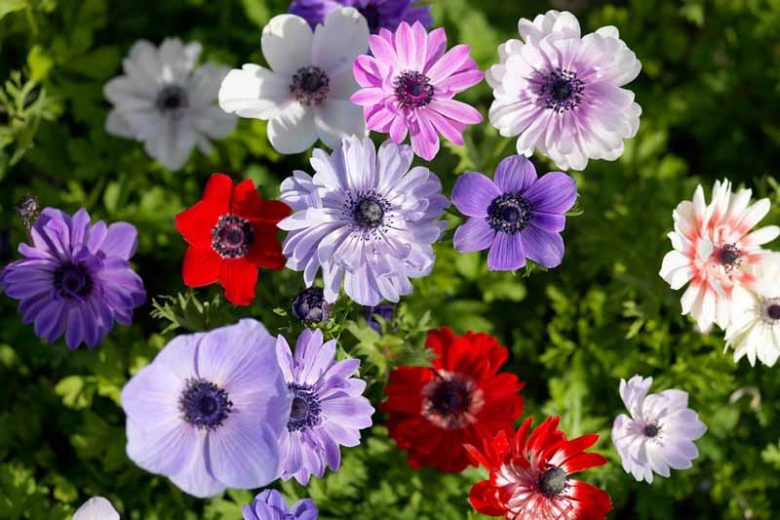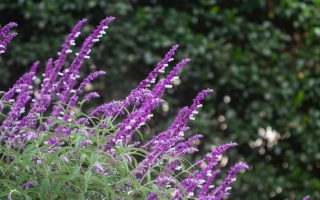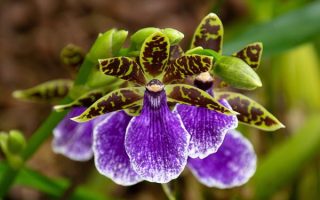marwaarsanios.info – The Poppy Anemone (Anemone coronaria), also known as the “Windflower,” is a vibrant and stunning perennial that has captured the hearts of gardeners worldwide. Known for its bold, colorful blooms and delicate foliage, the Poppy Anemone is a standout in any garden. With its striking poppy-like flowers in shades of red, purple, pink, and white, this plant brings a splash of color and charm to spring and early summer gardens. Native to the Mediterranean region, the Poppy Anemone is prized for its ability to thrive in a variety of growing conditions while adding beauty and elegance to borders, flower beds, and container plantings.
Physical Characteristics
The Poppy Anemone is a herbaceous perennial that typically grows between 12 to 18 inches (30 to 45 cm) tall, making it a great choice for both small and large garden spaces. Its foliage consists of dark green, deeply lobed leaves that form a soft mound around the plant’s central flower stalks. The flowers are the main attraction of the Poppy Anemone, typically measuring about 3 to 4 inches (7.5 to 10 cm) in diameter. The blooms resemble poppies with their bold, flat petals and a prominent central dark eye. The flower colors range from vibrant reds and purples to soft pinks and whites, with some varieties featuring delicate, contrasting markings. The plant blooms in late spring to early summer, often from April to June, and the flowers typically last for several weeks, providing a colorful display during the garden’s peak blooming season.
Growing Conditions
Poppy Anemones thrive in full sun to partial shade and prefer well-drained, fertile soil. They are adaptable to a range of soil types, but they perform best in slightly alkaline to neutral soil. These flowers are relatively drought-tolerant once established, but they do appreciate regular watering, especially during dry spells, to keep their roots hydrated. Poppy Anemones can be planted in borders, flower beds, and containers, and they work well as a feature plant in mixed perennial gardens. While they are generally hardy in USDA zones 6 to 9, they are often grown as annuals or treated as tender perennials in cooler climates, where they can be dug up and stored during the winter months.
The plants can be propagated by dividing the tuberous roots in the fall or early spring. When planting, it’s important to plant the tubers at the proper depth—typically 2 to 3 inches (5 to 7 cm) deep—and ensure they are placed in well-draining soil to avoid waterlogged roots. Mulching around the base of the plants can help protect the tubers during colder months and prevent the soil from drying out during the warmer season.
Uses in Gardening and Landscaping
The Poppy Anemone is an excellent plant for adding vibrant color to gardens in spring and early summer. It works well in mixed perennial borders, flower beds, and as a ground cover where it can provide a burst of color during the growing season. Its low height makes it ideal for planting along the edges of pathways, in rock gardens, or in containers where it can be appreciated from up close. The flowers’ vivid colors also make them a great choice for cutting gardens, as they produce long-lasting blooms that can be used in fresh floral arrangements. The Poppy Anemone pairs beautifully with other early-season flowers like tulips, daffodils, and primroses, creating a dynamic and colorful spring display.
In addition to its ornamental value, the Poppy Anemone attracts pollinators, particularly bees and butterflies, which are drawn to the nectar-rich flowers. By incorporating this plant into a garden, gardeners can help support local pollinator populations while enjoying a beautiful floral display.
Health and Medicinal Benefits
While the Poppy Anemone is primarily grown for its beauty and ornamental appeal, some species in the Anemone genus have been used in traditional medicine. However, it is important to note that the Poppy Anemone itself is not widely used for medicinal purposes, and caution should be exercised when handling or using any part of the plant. Many species of Anemone contain compounds that can be toxic if consumed in large quantities. As such, the Poppy Anemone should be appreciated for its aesthetic qualities rather than its medicinal properties. Always consult a healthcare professional before using any plant for therapeutic purposes.
Ecological Importance
The Poppy Anemone plays a role in supporting pollinators, particularly bees and butterflies, which are attracted to the plant’s nectar-filled blooms. These pollinators are essential for the fertilization of many plants and contribute to the overall health and biodiversity of the garden. By planting Poppy Anemones, gardeners can help support local wildlife while adding beauty and color to their outdoor spaces. The plant’s ability to thrive in a variety of growing conditions also makes it an important component of gardens designed to promote ecological balance and biodiversity.
Conclusion
The Poppy Anemone is a beautiful and versatile perennial that adds a splash of color to gardens in the spring and early summer. With its striking, poppy-like flowers, vibrant colors, and graceful foliage, it is a perfect choice for gardeners looking to create an eye-catching floral display. Whether planted in borders, flower beds, or containers, the Poppy Anemone offers year-round interest with its stunning blooms and minimal care requirements. Its ability to attract pollinators and its adaptability to a range of growing conditions make it a valuable addition to any garden. Whether you’re looking to enhance your garden’s color palette or create a pollinator-friendly space, the Poppy Anemone is sure to delight.




